Did you know that there are global agreements against the dumping of nuclear waste into the world’s oceans? They are called the London Convention and London Protocol (LC/LP) and the latest meeting of the government signatories and observers, including Greenpeace International, has just finished under the auspices of the United Nations International Maritime Organization (IMO). It was an uncomfortable experience for Japanese diplomats trying to defend the decision to dispose of nuclear waste from Fukushima Daiichi into the Pacific Ocean. But it also triggered memories of a different time and a different policy nearly three decades ago when Japan at the IMO took on the role of protecting the marine environment from radioactivity.
The LC/LP international conventions, which were established between the 1970’s and the 1990’s, only exist because of sustained public pressure against governments and the global nuclear industry which from 1946 had been dumping nuclear waste from ships into the world’s oceans. For countries such as the United Kingdom, United States, France, and Russia, military and commercial nuclear programs were producing enormous volumes of nuclear waste of many different types.
Faced with the rapidly growing stockpiles of wastes, from the 1950’s governments choose one of the least costly options for dealing with some of those wastes – dumping solid and liquid wastes directly into the ocean. The thinking was that the waste would be out of sight in the deep ocean and that radioactivity would dilute. Other countries also developing their commercial nuclear power programs, such as Germany and Japan, also supported nuclear waste dumping at sea. Seventy years of the commercial nuclear industry and the nuclear waste crisis has only got worse and still with no viable safe solution.
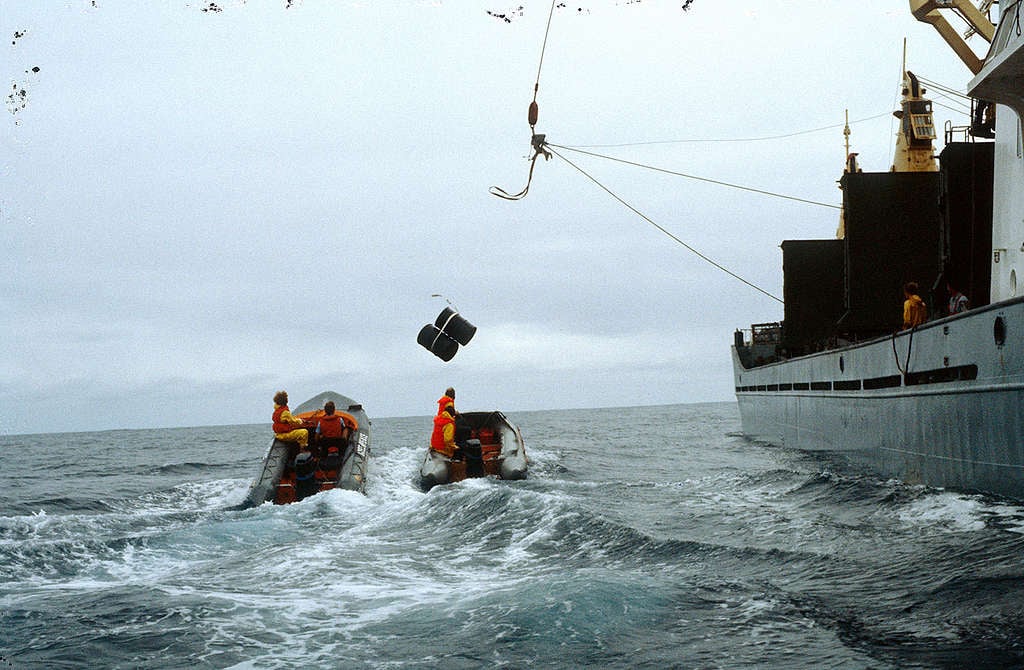
Fortunately, the last known deliberate nuclear waste dumping from a ship into the ocean was in October 1993 when the Russian navy dumped 900 tons of liquid and solid nuclear waste into the international waters off the coast of Vladivostok in the sea near Japan and Korea. The justifications offered by the government in Moscow were that the issue was urgent as storage space was running out, that the radioactive waste was not hazardous, and that the dumping was carried out according to international norms.
Sound familiar?
History on repeat
The Japanese government in April 2021 announced its decision to proceed with plans for the deliberate discharge of nuclear waste water from the Fukushima Daiichi plant. Even beyond the 900 tons of nuclear waste the Russian’s dumped in 1993, Japan plans for more than at least 1.2 million tons to be mixed with sea water and discharged via a sub-seabed pipeline into the Pacific Ocean. The discharges are scheduled to take 30 years, but are almost certainly going to last much longer.
In 1993, the Japanese government called the Russian dumping extremely regrettable. Now, the Japanese government justifies its plans to discharge over 1 million tons of radioactive waste water as “necessary” because storage space is not available, and that the water is not contaminated but “treated”. Nearly 30 years apart, the dezinformatsiya, perfected by the Soviet Union and Russia and used to justify waste dumping, is mirrored by the disinformation from Tokyo.
In early 1993, the International Atomic Energy Agency (IAEA), already knew of Russia’s plans to dump nuclear waste, but did not intervene and chose not to inform Tokyo. Today, the IAEA has formed a partnership with the Japanese government to provide cover for its plans and to ensure, as it states, that the discharges will be done safely and in line with international practice. It continues to play the same historical role as set down in its 1957 statute of supporting and promoting the interests of the nuclear industry, not protecting the environment or public health.
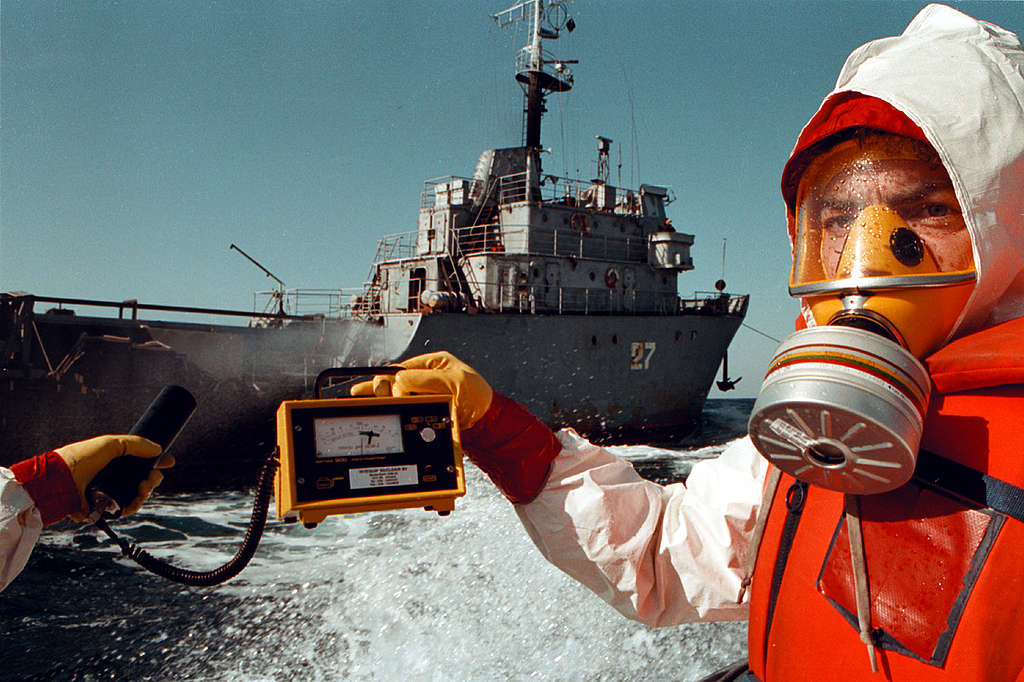
Since the 1970’s Greenpeace had been challenging nuclear sea dumping. After years of investigations and campaigning, the Russian navy’s secret operations to pump nuclear waste into the sea were challenged and filmed by the Nuclear Free Seas campaign team on board the Motor Vessel Greenpeace ship on 18 October 1993. While the MV Greenpeace sat off the Russian coast after the Russian military ship TNT27 and other navy vessels returned to port to pick up another cargo of nuclear waste, their nuclear dumping exposed to world attention, the Russian’ government announced on 22 October that it would halt further disposal plans. The TNT27 remained in port.
By the time the Greenpeace ship had docked in Japan, the government of Morihiro Hosokawa had announced a policy change. It would no longer advocate nuclear waste disposal at sea. Instead, it would support an amendment to the London Convention at the November 1993 meeting at the IMO that would prohibit all nuclear waste disposal at sea. Both then and now, Greenpeace International representatives were at the IMO meeting pushing for an end to radioactive pollution of the marine environment.
I played a very minor role at that time, chasing the then IAEA Director Hans Blix, from Seoul to Tokyo with a copy of a telex (it was three decades ago!) from the Russian government informing Blix of their plans for nuclear dumping. The IAEA for some reason had chosen not to inform the Japanese government. Travelling from South Korea to Japan, I still remember as if it was only yesterday how moved I was watching my Greenpeace colleagues John Sprange, Twilly Cannon, Dima Litvinov, Thomas Schultz, captain Pete Wilcox and the rest of the crew of the MV Greenpeace confronting the Russian navy on NHK TV .
One further result of Greenpeace International, Greenpeace Germany, and Greenpeace Japan’s exposé of Russian dumping was that the Japanese government took the decision to financially support the building of additional storage and processing facilities for nuclear waste in the Russian Far East. This was a point that Greenpeace International has emphasised over the years at IMO meetings and drew the parallels for the Fukushima water crisis.
Failed discussions and agreements
A principal objective of the London Convention and London Protocol is to protect the marine environment from pollution, including man-made radioactivity. However, the Japanese government contends that their plans for Fukushima contaminated water have nothing to do with the conventions. In fact, at the latest meeting on 26 October 2021, Japan tried to stop further discussion of the Fukushima water issue, arguing that the IAEA was the correct place to discuss such matters and it was not appropriate for governments to consider the issues at the LC/LP United Nations hosted meeting. This is an absurd and scientifically bankrupt position when radioactivity discharged from a pipeline poses potentially a greater coastal threat to the marine environment than deep sea dumping from a ship.
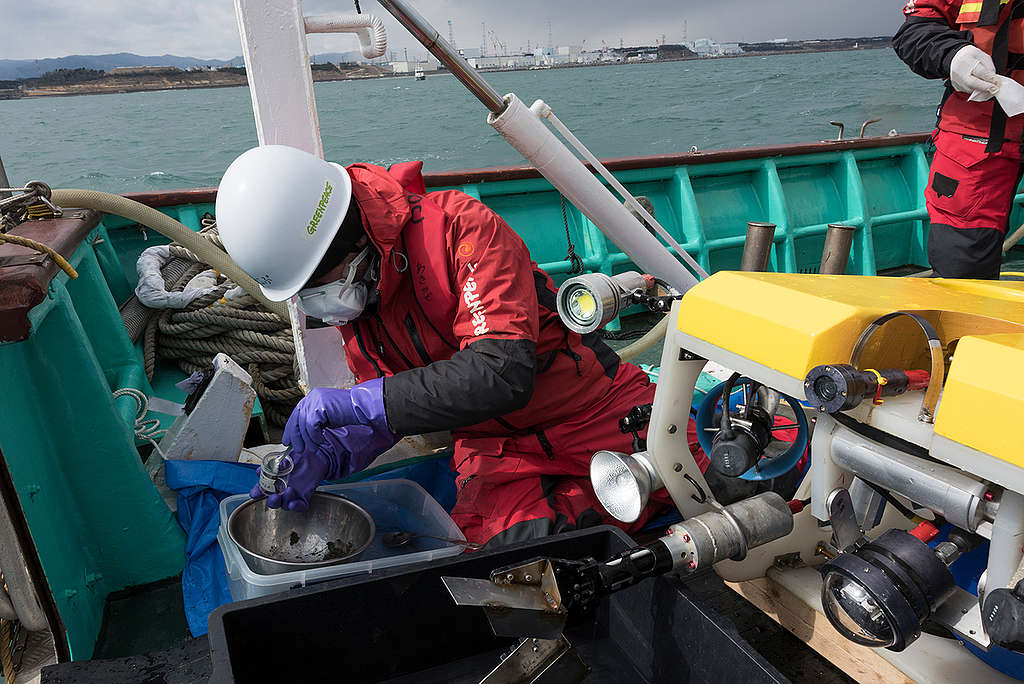
Japan failed to end discussion of the Fukushima contaminated water issue at the LC/LP. In Greenpeace International’s written submission, Greenpeace International proposed that a scientific working group be established under the LC/LP that would consider the alternatives to discharging the Fukushima waste into the Pacific. Greenpeace International argued, as in 1993, that there were alternatives to the Russian dumping, namely additional storage and applying best available processing technology, and that these should also be applied at Fukushima Daiichi.
In 1993, Russia accepted international assistance and the dumping stopped. However, Dr. David Santillo, Greenpeace International’s science representative reported that Japan refused to consider this option at the October 2021 IMO meeting, and its position was supported by the United States, France and the UK. The governments of South Korea, Chile, China, and the Pacific Island nations of Vanuatu and Palau all spoke in favour of reviewing alternatives to discharge in a technical working group. The meetings operate on consensus and with Japan’s objections, agreement to assess alternatives was impossible. Dr. David Santillo, challenged the IAEA over its role, and asked if it could be tasked with reporting on its discussions with Japan on the alternatives to discharges. The IAEA has agreed to report back in 2022.
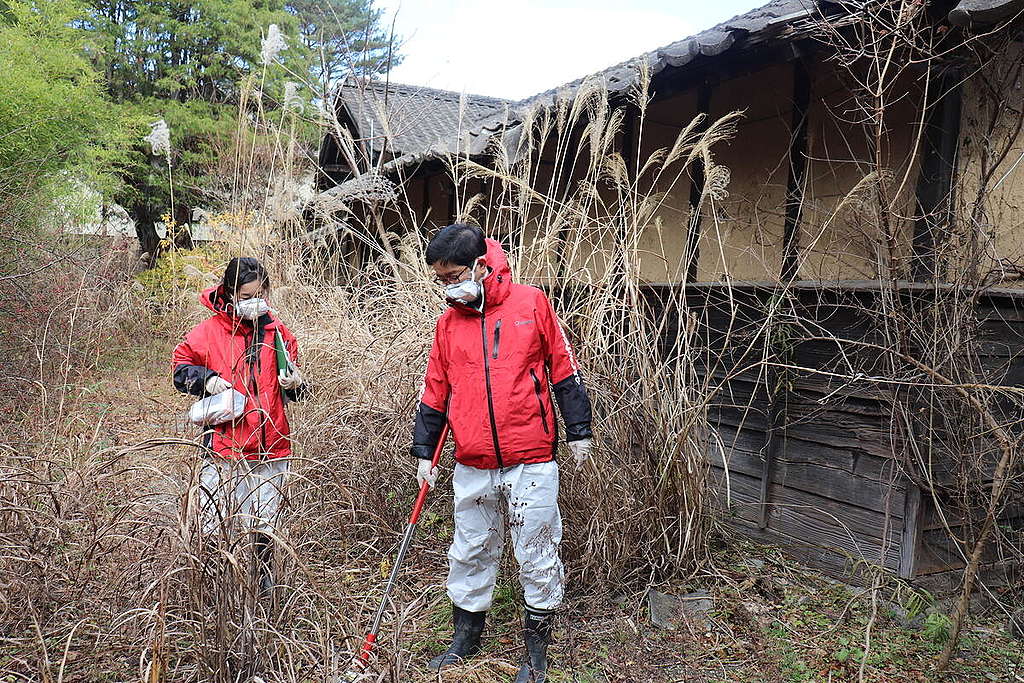
There is a historical resonance and also a tragic irony with Japan’s attempts to remove discussion of its Fukushima nuclear waste crisis from international review at the LC/LP IMO meetings. The Russian dumping in 1993 caused public and political outrage in Japan. The Japanese government of Hosokawa subsequently played an important and critical role at the LC/LP meeting when it supported the prohibition of all nuclear waste ocean dumping. Nearly thirty years ago its position was no doubt informed by self-interest – protecting its coastal waters from radioactive pollution and the rights of its own citizens, especially the fishing communities that were at risk.
Back then, the position of the Japanese government was the right and just thing to do. Today, protecting the marine environment from deliberate radioactive pollution still remains the right and legal thing to do – except that’s not what’s happening.
Instead, the government of Prime Minister Kishida, like his predecessors Abe and Suga, are disregarding and disrespecting the views and rights of their own citizens and fishing communities along the Tohoku coast.
The decision to discharge violates an agreement to abide by the views of the Fukushima fishing federations. They are not acting to protect the marine environment from radioactive pollution but instead will be the source of pollution. The Japanese government is also seeking to avoid scrutiny of their plans and to dismiss the concerns and opposition of neighbours in the Asia Pacific region, near and far. And they clearly don’t want to explore any viable alternative options of storage and processing.
Continuing the fight
There are many technical and radiological reasons to be opposed to discharging Fukushima waste water into the Pacific Ocean. And Greenpeace East Asiahas reported on these and continues to investigate. But the decision also affects you on a fundamental level. It should rightly trigger an outrage. In the 21st century, when the world’s oceans are already under the most severe threats including the climate and biodiversity emergencies, a decision by any government to deliberately contaminate the Pacific with radioactivity because it’s the least cost/cheapest option when there are clear alternatives seems so perverse. That it is Japan, given its historical role in securing the prohibition on nuclear dumping in the London Convention and London Protocol, makes it all the more tragic.
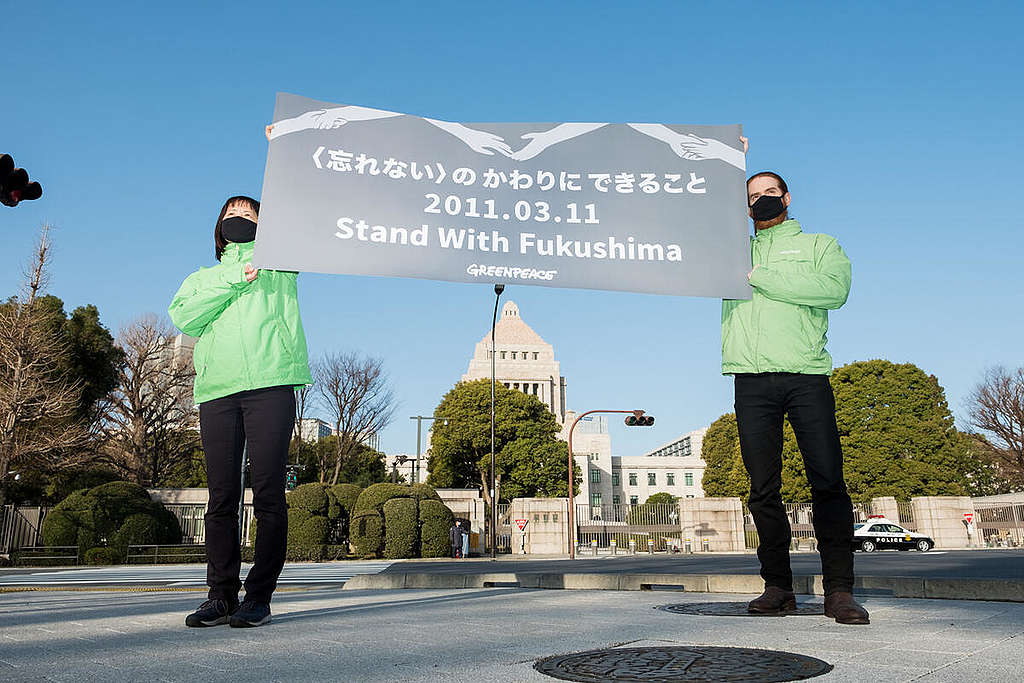
There are numerous legal problems facing Japan’s plans – they have dismally failed to consult with affected coastal countries, including South Korea, China and northern Pacific Island States; they have failed to conduct an environmental impact assessment, and they have obligations not to allow pollution from their own waters to pollute international waters or the waters of other countries. This disregard for the human rights of both their own Japanese citizens, as well as those in the wider Asia Pacific region, including indigenous people’s has justifiably been challenged, not least by UN human rights Special Rapporteurs.
Japan is under international legal obligation to take all measures possible to avoid transboundary pollution from radioactivity, and its failure to develop the alternatives to dumping in the Pacific by continued storage (which it can certainly extend; it is a question of money) and treating the water to remove radioactive, including carbon-14 and tritium, (another question of money). But these are just reflections of the blazingly obvious: Japan is exporting its radioactive pollution by dumping it in the Pacific ocean.
However, there is time to stop the discharges which are due to begin in 2023, at the earliest. The governments attending the LC/LP, under the auspices of the United Nations IMO, together with Greenpeace International, will continue to question and challenge the Japanese government on the Fukushima nuclear waste water crisis. It’s only one of several international instruments that allow scrutiny of the Fukushima Daiichi plant and to directly challenge the plans to discharge. The articles of the UN Convention on the Law of the Sea (UNCLOS) have even greater relevance and application to Tokyo’s misguided plans. The new government of Kishida may yet find out, as the government of Boris Yeltsin did nearly three decades ago, that you may have plans for dumping radioactive waste into the sea, but it does not mean you will be able to.
Shaun Burnie is a Senior Nuclear Specialist at Greenpeace East Asia.
